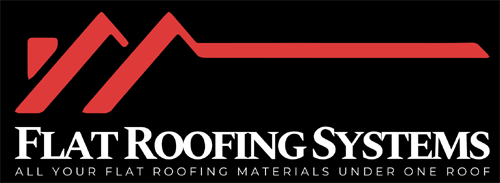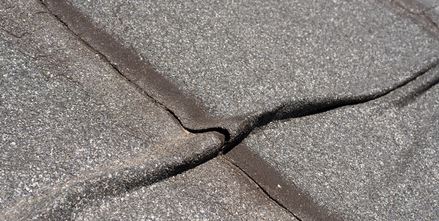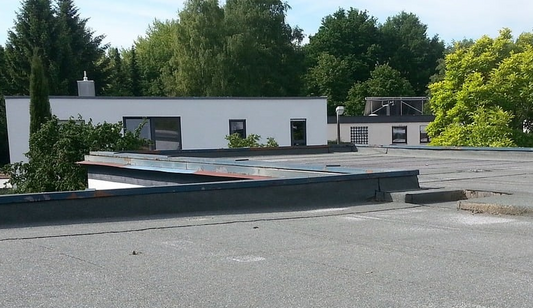Fleece backed EPDM rubber roofing membrane represents a significant advancement in flat roofing technology, combining the proven durability of EPDM rubber with an integrated polyester fleece backing for superior performance. This two-layer system offers enhanced puncture resistance, extended lifespan, and exceptional reliability for both commercial and domestic roofing applications.
What is Fleece Backed EPDM Membrane?
Fleece backed EPDM is a specialised roofing membrane consisting of a standard 1.14mm EPDM rubber layer bonded to a 1.4mm polyester fleece backing, creating a combined thickness of 2.3mm. The fleece backing is applied during the manufacturing process before vulcanization, ensuring permanent adhesion between the layers. This externally reinforced construction delivers significantly greater strength and durability compared to traditional single-ply EPDM membranes.
The synthetic rubber component (Ethylene Propylene Diene Monomer) provides exceptional weathering, ozone resistance, and UV protection, while the fleece backing adds structural reinforcement and enhanced adhesive properties. This combination creates a robust waterproofing solution suitable for demanding flat roof applications.
How Fleece Backed EPDM Differs from Standard EPDM

Standard EPDM membranes are single-ply systems available in 1.14mm or 1.52mm thickness, offering reliable waterproofing for flat roofs. Fleece backed EPDM, however, incorporates an additional 1.4mm polyester fleece layer that fundamentally changes the membrane's performance characteristics. The increased overall thickness of 2.3mm provides a cushioning effect that distributes loads more evenly across the roof surface.
This reinforced construction reduces the likelihood of shrinkage and stress over the entire installation, making fleece backed systems more stable over time. The fleece backing also creates superior wind uplift performance, as the bonding medium can act as a secondary waterproofing layer underneath the EPDM membrane. Standard membranes lack this dual-layer protection and enhanced structural integrity.
Key Benefits and Advantages
Fleece backed EPDM delivers exceptional puncture resistance due to the cushioning fleece layer, making it ideal for high-traffic areas and applications where roof penetration is a concern. The membrane offers superior wind uplift, hail resistance, and impact protection compared to standard single-ply systems. With a proven lifespan exceeding 50 years based on global performance data, fleece backed EPDM provides long-term reliability that reduces lifecycle costs.
The reinforced construction can withstand heavy foot traffic, violent storms, and wind pressure without compromising waterproofing integrity. Installation systems using fleece backed membranes require up to 75% fewer seams compared to modified bitumen alternatives, reducing potential leak points and installation time. The enhanced durability means roofs can handle regular maintenance access and equipment placement without membrane damage.
Applications and Ideal Use Cases
Green roofing projects represent one of the most demanding applications where fleece backed EPDM excels, offering excellent resistance to root penetration and the ability to support ballasted installations. The membrane's cushioning properties allow it to handle the weight of drainage layers, growing media, and vegetation without puncture damage.
Roof terraces and areas with regular foot traffic benefit from the enhanced strength and impact resistance of the fleece backing.
The membrane works seamlessly with various substrates including timber, metal, and concrete roofing surfaces, making it versatile for both new construction and retrofit projects. Commercial and industrial buildings with equipment installations, HVAC systems, and maintenance requirements find fleece backed EPDM particularly suitable for its durability.
Domestic flat roofing projects also benefit from the extended warranty periods and reduced maintenance needs associated with this premium membrane system.
Installing Fleece Backed EPDM Rubber Roofing
Fully adhered installation represents the most common method, using water-based deck adhesives or moisture-curing polyurethane products applied to both the substrate and fleece backing.
The membrane is rolled out, positioned carefully, and pressed firmly into the adhesive to ensure complete contact and eliminate air pockets. This method provides maximum wind uplift resistance and creates a monolithic waterproofing layer across the entire roof surface.
Mechanically fastened systems use specialised screws and metal plates to secure the membrane directly to the roof deck, offering faster installation in certain applications. Seam joins are completed using cold splicing techniques with compatible adhesive systems, creating a flame-free installation process that appeals to both professional installers and safety-conscious building owners. Hot asphalt adhesion is also available for specific applications requiring traditional built-up roofing integration.
Required Adhesives and Accessories
Moisture-curing polyurethane adhesives represent the preferred bonding solution for fleece backed EPDM, providing strong, permanent adhesion across various substrate types. Water-based deck adhesives specifically formulated for fleece backed systems offer excellent coverage rates and environmental advantages over solvent-based alternatives. Manufacturer-recommended adhesives are essential for achieving optimal performance and maintaining warranty coverage throughout the membrane's lifespan.
EPDM seam tape systems available in 3-inch or 6-inch widths come with pre-applied adhesive backing for consistent, quality seam construction. Cover strip materials and primers enhance seam integrity and ensure long-term waterproofing at membrane overlaps. Edge termination products, including metal drip edges and fastening bars, complete the installation and protect perimeter details from wind uplift and moisture infiltration.
Installation Best Practices
- Proper substrate preparation is critical, requiring surfaces to be clean, dry, and free from debris, loose materials, or contamination that could compromise adhesive bonding.
- The roof deck must be structurally sound and properly sloped to ensure adequate drainage, as standing water can reduce membrane lifespan.
- Before adhesive application, the substrate should be inspected for protrusions, sharp edges, or irregularities that could damage the membrane.
- Membrane sheets should be rolled out and allowed to relax before installation, reducing wrinkles and ensuring proper fit.
- Adhesive application follows manufacturer specifications regarding coverage rate, open time, and temperature conditions for optimal bonding.
- Seam overlaps typically require 3 to 6 inches of coverage, with careful alignment to prevent gaps or misalignment that could compromise waterproofing.
- Weather conditions play a crucial role, with installation best performed in dry conditions between 4°C and 37°C for proper adhesive curing.
Performance Characteristics
Fleece backed EPDM demonstrates excellent weather adaptability, remaining flexible across a wide temperature range, allowing for natural expansion and contraction without stress cracking.
The membrane's sound absorption properties reduce noise transmission through the roof assembly, benefiting commercial buildings with occupied spaces below. UV resistance ensures long-term performance without significant degradation, though reflective coatings can further enhance thermal performance and reduce cooling costs.
The dual-layer construction provides extra waterproofing protection, as the fleece-reinforced adhesive layer acts as a secondary barrier beneath the EPDM surface. This redundancy significantly reduces the risk of catastrophic leaks and extends the effective service life of the roofing system.
The membrane maintains its physical properties and waterproofing integrity even under sustained exposure to ozone, chemicals, and environmental pollutants.
Maintenance and Longevity of Fleece Backed EPDM
Bi-annual inspections during spring and fall allow building owners to identify and address minor issues before they escalate into major problems. Inspection protocols should include checking seams, perimeter details, and penetrations for signs of lifting, damage, or deterioration. Regular debris removal prevents organic material accumulation that can retain moisture and potentially damage the membrane over time.
Drainage systems require periodic clearing to prevent standing water, which can accelerate membrane aging and compromise waterproofing performance. Small punctures or tears should be repaired immediately using manufacturer-approved patch materials and adhesives to maintain system integrity. Implementing traffic management protocols and using protective walkway pads in high-traffic areas extends membrane lifespan by preventing unnecessary wear. With proper maintenance, fleece backed EPDM systems consistently achieve 50+ year service lives.
Green Roofing Considerations
Fleece backed EPDM has become the membrane of choice for green roof installers due to its superior puncture resistance and ability to support ballasted installations during construction. The cushioning fleece layer allows the membrane to handle the considerable weight of drainage layers, growing media, and vegetation without damage. High resistance to root penetration ensures the waterproofing layer remains intact as planting layers mature and root systems develop.
The reliability of fleece backed EPDM provides peace of mind for green roof projects, where membrane failure would require stripping back all upper layers including planting and drainage systems for repair. This makes the initial investment in a premium waterproofing membrane critical for long-term green roof success. The membrane's compatibility with various insulation types and drainage products allows designers flexibility in optimizing thermal performance and stormwater management.
Environmental and Sustainability Factors
EPDM membrane is 100% recyclable at the end of its service life, with recycling technologies capable of splitting used membrane for manufacturing new roofing products. The material contains zero toxic substances and emits no harmful fumes during its operational lifespan, contributing to healthy indoor air quality. Long membrane lifespan reduces the environmental impact of frequent roof replacements, conserving resources and minimizing construction waste.
Fleece backed EPDM systems are suitable for rainwater harvesting applications, providing a clean, inert surface that does not contaminate collected water. The membrane's contribution to surface water management through green roof integration helps reduce urban heat island effects and stormwater runoff. Energy-efficient white-on-black variants reflect solar radiation, reducing cooling loads and improving building energy performance.
Introducing Flexproof Fleece backed EPDM membrane

At Flat Roofing Systems, we are pleased to stock Flexproof's Fleece Backed EPDM.
Here's just some of it's fantastic advantages:
Material Specifications & Technology
- Over 1mm thicker than standard EPDM membranes (1.2mm extruded EPDM)
- Thick 300gm fleece backing completely fused to the EPDM membrane
- Adhesive-free and environmentally friendly manufacturing process
- Innovative Embedded Fleece Technology (EFT) provides additional strength and protection
Performance & Durability
- 50 year life expectancy
- 25 year membrane warranties available
- Insurance-backed warranties also available
- Broof T4 fire rating
- Permanently UV stable
- Totally weatherproof with no cracking, tearing or splitting
- Independently tested 340% EPDM elongation allows for building movement
- Elasticity that will not degrade over time
Installation Benefits
-
Superior smoothness and bond strength, even on irregular roof surfaces - Puncture resistant and strong enough to walk on
- Effectively covers roof deck imperfections, making it ideal for refurbishment projects
- Prevents roof system shrinkage and lays flatter for a perfect finish
- Cold applied, flame-free installation
- Weighs much less than bitumen-based roofing materials
- Grey fleece and colour-coded adhesives for easy application
- Pre-taped FlexiProof Turbo Seams for fast and reliable on-site butt joining
Roll Options & Waste Reduction
- Available in a variety of roll widths
- Lengths custom cut to fit project requirements, minimising waste and maximising profit
- Available in 1.52m and 0.75m widths
- Various length options from 15.25m to 61m
Quality & Standards
- CE-marked and manufactured in an ISO 9001-registered facility
- Conforms to all required UK safety standards
- Fully recyclable
- Full range of CAD designed edge trims and components for a perfect fit
Professional vs DIY Installation
While the installation process for fleece backed EPDM is designed to be straightforward, manufacturers strongly recommend professional installation to fully realize the membrane's performance benefits and longevity potential. Certified installers have the training, experience, and specialized equipment necessary to ensure proper substrate preparation, adhesive application, and seam construction. Professional installation typically provides access to extended warranty coverage, often ranging from 20 to 30 years or more.
The flame-free installation process and cold-applied adhesive systems have made fleece backed EPDM more attractive to the DIY sector compared to torch-applied alternatives. However, substrate preparation, membrane handling, and seam detailing require careful attention to manufacturer guidelines for successful results. Building owners considering DIY installation should consult with certified installers for project planning and consider professional assistance for critical details and quality assurance.
Cost Considerations
Fully adhered systems require higher initial investment due to adhesive costs and labor-intensive application processes, but deliver superior wind uplift performance and long-term reliability. Mechanically fastened options reduce material costs but may have more limited warranty coverage depending on wind zone requirements. The elimination of cover board requirements when using fleece backed membranes reduces both material and labor costs compared to standard single-ply systems.




